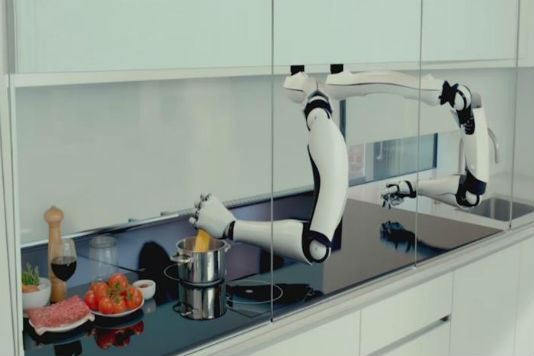Food innovations that could change our lives

From robot chefs to 3D printed food, here are some incredible innovations from the world of food tech.
Weird, wonderful, inventive, eco-friendly, life-saving and technologically brilliant – these are just a few of the words that can describe the advances taking place in the food industry at the moment.
DNA diets
As people become more aware of how their bodies respond to certain foods, and diets such as the Paleo increase in popularity, so genetic tests are emerging that allow us to streamline a diet that’s best suited to our individual genetic make-up.
Sugar reduction technology
Scientists are coming up with healthy alternatives to sugar, which give food the same palatability, appearance and preservative power. Expect to hear more about lactase enzyme technology, trehalose and MycoSmooth, which utilises mushrooms (such as shiitake) to reduce the natural bitterness of cocoa so chocolate can be made with very little sugar.
The rise of vertical farms
By 2050, 80% of the global population will live in urban environments, hence there's a growing movement in cultivating plants in skyscraper greenhouses. Once denounced as a fad, vertical farms are now springing up around the world as a logical response for growing crops as farmland becomes scarce.
3D printed food – at home
Natural Machine’s Foodini is a 3D printer aimed at professional kitchens and home cooks. Using the open capsule method (you prepare and add fresh ingredients to it), it can print real meals and make healthier versions of preservative-heavy pre-packaged products. Foodini will be available from early 2016 at a cost of $1,500 (£1,047).
Personalised pasta shapes
An example of how 3D printed food is fast becoming fashionable in the food industry featured in a story on the 3ders website about pasta firm Barilla. It has been working with Dutch technology innovators TNO Eindhoven with a plan to equip Italian restaurants with 3D food printers over the next few years so diners can eat pasta they’ve designed themselves.
Hydroponic and aquaponic farms
Several new farming methods don’t use soil. Hydroponic farming uses flowing, nutrient-rich water to grow plants while aquaponic farms are similar, but use a mixture of water and fish waste. The result is produce that grows quicker, and is less likely to succumb to disease. It’s not just farms – the Grove Ecosystem is a domestic-sized indoor garden that grows organic plants on clay pebbles.
Computer-created cookbooks
In April 2015, technology company IBM and the Institute of Culinary Education in New York published Cognitive Cooking, a book made from recipes co-created by Watson, an artificial intelligence system that had been inputted with cookbooks and food theory. Reviews are generally positive, so expect more cooking tomes and flavour combos from tastebud-deficient computers
Intelligent frying pans
Funded through crowdfunding site Kickstarter, you can now buy an intelligent frying pan that essentially teaches you how to cook by using heat sensors and Bluetooth technology to prevent the under- or over-cooking of food. Visit pantelligent.com for more info.
Smart labels
Smart labels are the food industry’s bar codes of tomorrow. Norwegian company Thinfilm are forerunners in the technology, offering retailers cost-effective, bendable labels with sensors that provide them with real-time data from the products’ location to temperature to moisture levels. Then there is Soundpaper, by Labels That Talk (LTT), where shoppers can use their smartphones to scan a barcode that allows them listen to product information.
Robot chefs
UK-based firm Moley Robotics has created the world’s first robotic kitchen (pictured above), which uses a robot that cooks like as human chef and can even clean pans. The consumer version is launching in 2017.
Neurogastronomy
An emerging science called neurogastronomy is set to change how we eat and drink. Created a decade ago, the focus is not on changing the food we eat on a molecular level but re-wiring our brains to alter our perception. For example, Ultraviolet in Shanghai – voted the 3rd best restaurant in Asia’s 50 Best Restaurants Awards 2016 – uses light, sound, projections and aromas to create a multi-sensory dining experience.
A portable gluten sensor
Pocket-sized technology is increasingly enabling people to protect their health – San-Fran-based 6 Sensor Labs is developing consumer products that detect minute traces of potential toxins in food, starting with Nima – a gluten sensor that Time named as one of the Best Inventions of 2015. Costing around $199, Nima will be available in mid-2016.
Advertising discounted food
Another way to reduce waste is for outlets to sell food at the end of the day at a discounted price. Apps such as PareUp get this information to consumers. Currently covering New York only – but with plans to expand – the start-up enables customers to locate local deals, while retailers make money and food isn't wasted.
What food technology innovations are you excited about? Let us know in the Comments below.
More tasty morsels:
What's the future for cookbooks?
Comments
Be the first to comment
Do you want to comment on this article? You need to be signed in for this feature